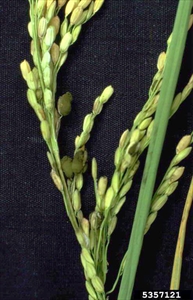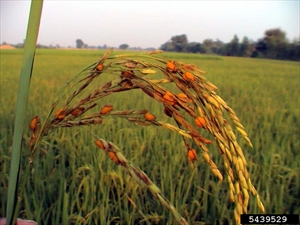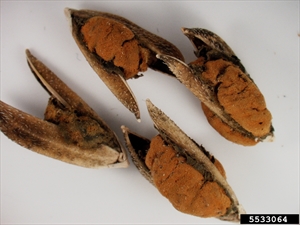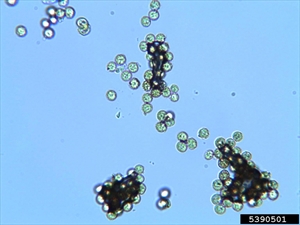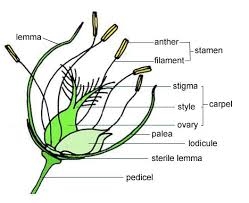- Widespread. Asia, Africa, North, South, Central America, the Caribbean, Europe, Oceania. In Australia, Fiji, Papua New Guinea.
- Minor disease. Not a true smut. Occasional outbreaks in Asia. A few grains on each panicle develop velvety spore balls, first orange then greenish-black.
- Complex life cycle: spores of two types in the balls: (i) millions of minute asexual ‘conidia’ (viable in soil up to 4 months), and (ii) dark brown ‘sclerotia’ up to 10 mm (viable in soil up to 12 months) – these form small toadstool-like fruiting bodies that develop the sexual spore type (‘ascospores’). Not certain which spore type most important. Alternatively, possible that either one or both spore types first infect grasses which then infect rice.
- Biosecurity: use certified seed (IRRI suggest visual inspection for spores).
- Cultural control: treat uncertified seed (52°C for 10 mins.); if practical, remove seed balls in the field before they shed spores; keep N under 180kg/ha; if practical, reduce humidity in irrigated crops by alternate flooding and drying; collect straw and burn, or plough in stubble and straw after harvest.
- Chemical control: not recommended as probably uneconomic, although coppers have been reported effective applied at booting.
